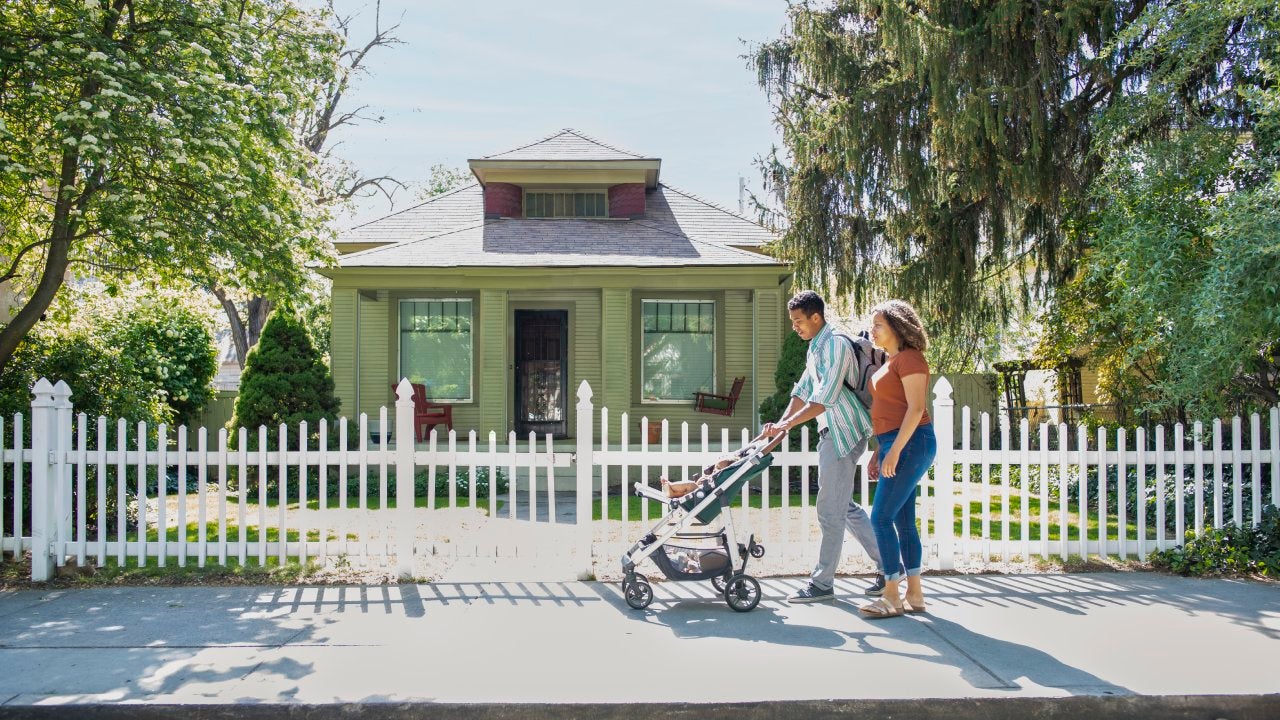What is a bedroom community?

Bedroom communities are towns and areas where the majority of residents commute elsewhere to work — typically a larger nearby city — and come home to sleep. These types of communities have been around since shortly after World War II. But they experienced a surge in popularity as a result of the COVID-19 pandemic, with increasing numbers of Americans looking for more space for their families and larger homes to accommodate working remotely.
What is a bedroom community?
A bedroom community is a residential area where large numbers of people live but do not work. Residents of bedroom communities often spend the majority of their time elsewhere, whether at their jobs or taking part in leisure activities.
Bedroom communities typically offer limited or very basic shopping and entertainment opportunities for residents and do not include local industry.
Is it a suburb?
A bedroom community is similar to a suburb but not quite the same. Suburban communities are often located around the perimeter of a city with little noticeable transition between where the city ends and the suburb begins. A bedroom community is typically further away, often separated from the city by open space and located in more rural or semi-rural settings.
Also called a commuter town
A bedroom community is often referred to as a commuter town because many of the residents do not work in the community where they live. Instead, they commute to jobs elsewhere and return home at night to rest and sleep.
History of bedroom communities
Bedroom communities were established after World War II, as Americans began moving to the suburbs. Between 1946 and 1964, families grew at a record pace and priorities changed. Families wanted to get away from the air pollution and crime associated with urban areas at the time, and sought well-manicured lawns and good schools for their children. Many were drawn to subdivisions built by a developer, with one house indistinguishable from the next. By the 1970s, the U.S. had become a “suburban nation,” aided by the fact that many people had cars and could choose to live as near or far from their employer as they desired.
Benefits and drawbacks
There are plenty of benefits to living in a bedroom community. But as with anything, there are trade-offs as well. Here are some pros and cons to consider:
Pros:
- More home for the money: Bedroom communities can be large and sprawling. This allows homeowners to afford more space than they could in more compact urban areas.
- A small-town feel: Neighbors in bedroom communities often know one another, socialize and raise their children together.
- Stronger schools and lower crime rates: A myriad of factors have led to better test scores in bedroom communities than in urban schools. Similarly, statistics have shown that violent crime is less prevalent in these communities as well.
Cons:
- Less time to enjoy life: Commuters may spend hours in transit each day, getting from home to work and back again. Long commutes leave less time to spend with friends and family or to do the things you enjoy.
- Shopping can be a challenge: Many bedroom communities have limited or only very basic shopping areas. If you want a variety of stores or specialty items, you’ll likely have to go to another town.
- Monotony and boredom: Bedroom communities can be very quiet, and the “sameness” is tough to escape. Living outside more densely populated areas often means subdivisions that look alike, big-box retailers that can be found anywhere in the country and restaurants that lack diversity.
Should you live in a bedroom community?
Deciding whether or not a bedroom community is right for you can be based on a variety of factors. You may discover that what works during one phase of your life does not work in the next. Often, when people start families, priorities change and a quieter community that offers more space and better schools becomes more appealing.
The location of your employer or the type of work you do may also play an important role in your decision. The pandemic has dramatically reshaped many people’s work life — according to the Pew Research Center, about six out of every 10 U.S. workers are working from home all or most of the time these days. This reality factors into the shift to bedroom-community living, making it easier for large numbers of Americans to live outside their place of employment.
Bottom line
Bedroom communities offer a variety of benefits. In exchange for these, however, residents must often sacrifice amenities associated with cities and more urban areas, such as a diversity of shopping, dining and entertainment options. Deciding whether a bedroom community is right for you depends on a variety of factors, including your phase of life and your employment.
You may also like

What are real estate transfer taxes?

New York housing market: Everything you need to know




